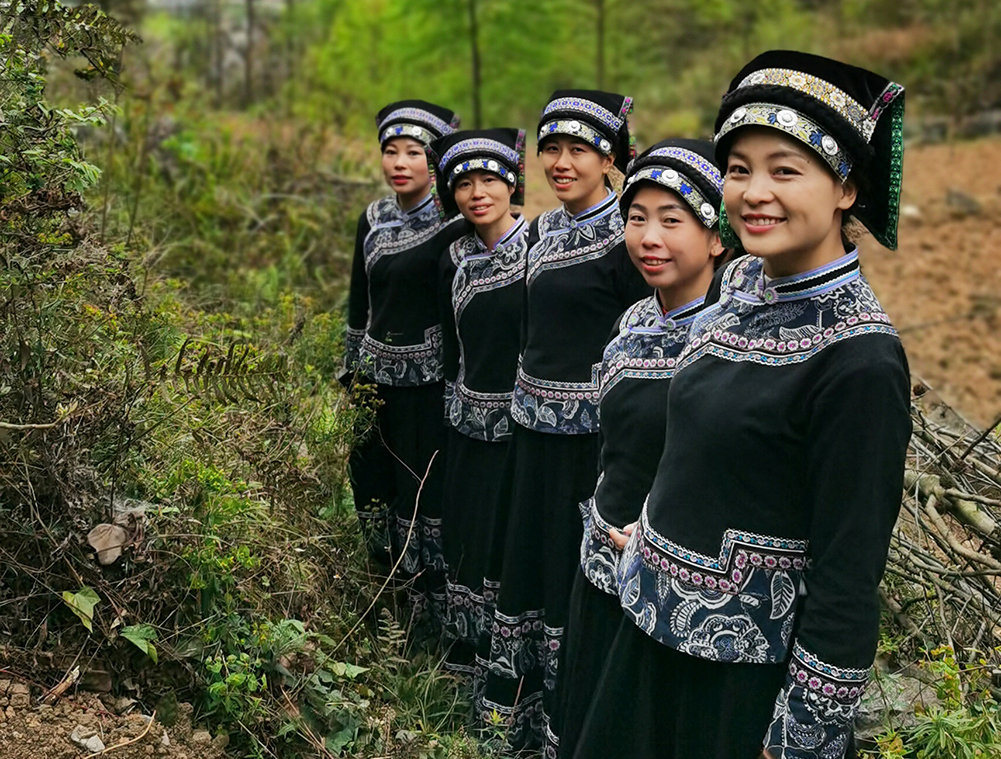
The plains where the Bouyei live are blessed with fertile land and a mild climate, making it an ideal place for farming various crops. They predominantly farm rice, wheat, maize, millet, and potatoes, although some cash crops such as cotton, sugar cane, tobacco, and tea are also grown to supplement their income. Unsurprisingly their diet is richly varied so, if you happen upon a Bouyei village, be sure to try the local food!
Like many people living in south China, rice is their staple food and is complemented by vegetables, pork, fish, or chicken, although they have an unfortunate preference for dog meat. They also have a fondness for pickled vegetables, sausages, and a type of curd made from pig’s blood. Sour and spicy flavours are integral to their cuisine, so much so that a local proverb states: “anyone who has not eaten a sour dish in three days will not be able to walk”. We’re not sure quite how true this theory is, particularly since no Bouyei person has ever risked testing it!
They are incredibly fond of rice wine, which they brew en masse following the autumn harvest. This homemade hooch plays a focal role in festivals but is also drunk regularly as part of daily meals. While Bouyei men tend to drink alcohol, the women prefer tea and are known for mixing it with honeysuckle. In fact, they have fostered a tea drinking culture over several generations and the most precious of these homemade teas is called Guniang Cha or “Girl’s Tea”, which is made by unmarried girls and is rarely sold, instead being given as gifts to friends.
Food is not only an important part of their daily life, it is also symbolic. The Bouyei will always welcome their guests with tantalising dishes and fine wines. If pork is served, this means the host wishes the guest a good harvest in the coming year. Offering the guest a chicken’s head means good fortune, the wings symbolise success, and the legs represent freedom from anxiety. If only it was that simple, and I’m sure we’d be at KFC every day!
Since the Song Dynasty (960-1279), the Bouyei women have been renowned for their particular skill at batik[1]. In 1953 a batik factory was even established in Anshun city to help cope with the national and international demand for this unique craftwork. Their work is colourful, beautifully patterned, and usually depicts motifs of flowers, waves, dragons, and snakes.
The women learn this art from the tender age of 12 and use it predominantly to make their clothes. They are equally accomplished at embroidery and brocade, making their traditional costumes some of the most intricate in China. Wood carving is also a popular pastime in Bouyei communities, particularly in Anshun County where they carve opera masks from clove or poplar wood.
Note:
[1] Batik: A cloth-dying process whereby a knife that has been dipped in hot wax is used to draw a pattern onto the cloth. The cloth is then boiled in dye, which melts the wax. Once the wax has melted off, the cloth is removed from the boiling dye. The rest of the cloth will be coloured by the dye but the pattern under the wax will have remained the original colour of the cloth.